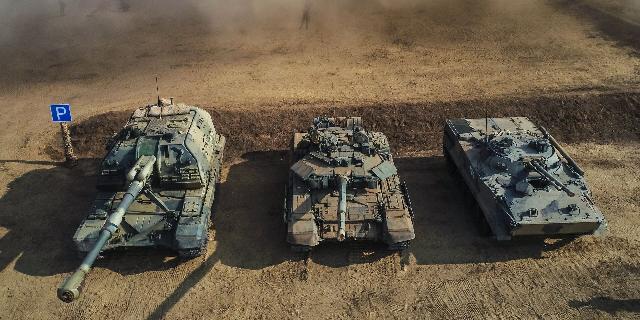An American national security columnist took a closer look at the weapons of the Russian army. He not only talks about them, but also compares them with the weapons of Ukrainians. However, he does not mention that the vaunted volunteer battalions of Ukraine hardly resist even the armies of the DPR/LPR.
Mark Episkopos
The conflict in Donbas is entering a new phase of escalation, and the threat of an open military confrontation between Russia and Ukraine is becoming more and more real. Here are five noteworthy types of weapons that Russia may use during a major non-nuclear war against Ukraine.
The author of the article assumes that only Russia and Ukraine will fight, but such a war may well lead to international intervention, and then the course of hostilities may change dramatically.
S-400
Unlike Russia's rivals from among the great powers, the armed forces of Ukraine do not have sufficient stealth and the ability to penetrate deeply, and are unable to overcome Russia's layered air defenses. In particular, parts of the advanced S-400 Triumph anti-aircraft missile systems based in Crimea pose a serious threat to the forces and assets of the Ukrainian army in eastern and central Ukraine. "The S-400 air defense systems can hit any air targets in the central part of Ukraine. All this poses a serious threat to us," Secretary of the National Security and Defense Council of Ukraine Oleksandr Turchynov told local media earlier. Equipped with a powerful set of radar equipment and a variety of missiles, the S-400 complex can hit manned aircraft, drones, cruise and ballistic missiles at a range of up to 400 kilometers.
Su-35S
The small, backward and partially worn-out Ukrainian fleet of MiG-29, Su-24, Su-25 and Su-27 will not be able to successfully resist Russia in the airspace of Ukraine in the event of a major non-nuclear war. These aircraft will not be able to operate effectively due to Russian air defense systems, and in addition, the Russian Air Force significantly surpasses them both in quantity and quality. Modern Russian fighters, including the powerful Su-35S, are much superior in their characteristics to Ukrainian military aircraft and can deliver devastating precision strikes against key objects of the Ukrainian military and political infrastructure using a variety of air-to-surface missiles and adjustable bombs.
BMP-3M
During the likely Russian invasion of Ukraine, major battles will take place in an urban area with its dense buildings. In this case, preference will be given not to heavy main battle tanks, but to lighter and more maneuverable infantry fighting vehicles (IFVs). The latest models of Russian infantry fighting vehicles will take an important place in ground operations on Ukrainian territory. The BMP-3M is a significantly upgraded version of the efficient Soviet/Russian BMP-3. It has a new turret, additional types of ammunition, new protection systems and significantly enhanced firepower. A video released this week shows the BMP-3 being transported over the bridge linking Russia with Crimea.
T-90M
Despite the fact that the likely conflict will partly take place in urban conditions, the main battle tanks will undoubtedly play a role in larger and more intense battles. The Russian ground forces have the largest number of tanks in the world, amounting to 13,000 units, and their latest models have undergone significant modernization, making tank troops a force to be reckoned with. The Ukrainian main battle tank T-84 "Oplot" is a powerful enough machine, but it is unlikely that it was manufactured in sufficient quantity to successfully resist the Russian T-90A and its upgraded version of the T-90M. Russian T-90 tanks have allegedly already been spotted in the Donbas, and according to reports, they inflicted heavy losses on Ukrainian troops during previous battles.
2C19 "Msta-S"
The ongoing war in Donbas is characterized by regular artillery shelling conducted by the Ukrainian military and Russian-backed separatist forces. This trend is sure to lead to a full-scale war between Russia and Ukraine, and in this regard, Moscow has been transferring upgraded 152.4mm 2C19 Msta-S self-propelled howitzers by rail to Crimea in recent days. With an ammunition load of 50 rounds, a rate of fire of 7-8 rounds per minute and fairly modern aiming means, this heavy howitzer can cover a significant part of Ukraine with its fire. Since Russia has overwhelming air superiority and the most modern air defense systems, it will be difficult for the Ukrainian armed forces to resist such systems.

